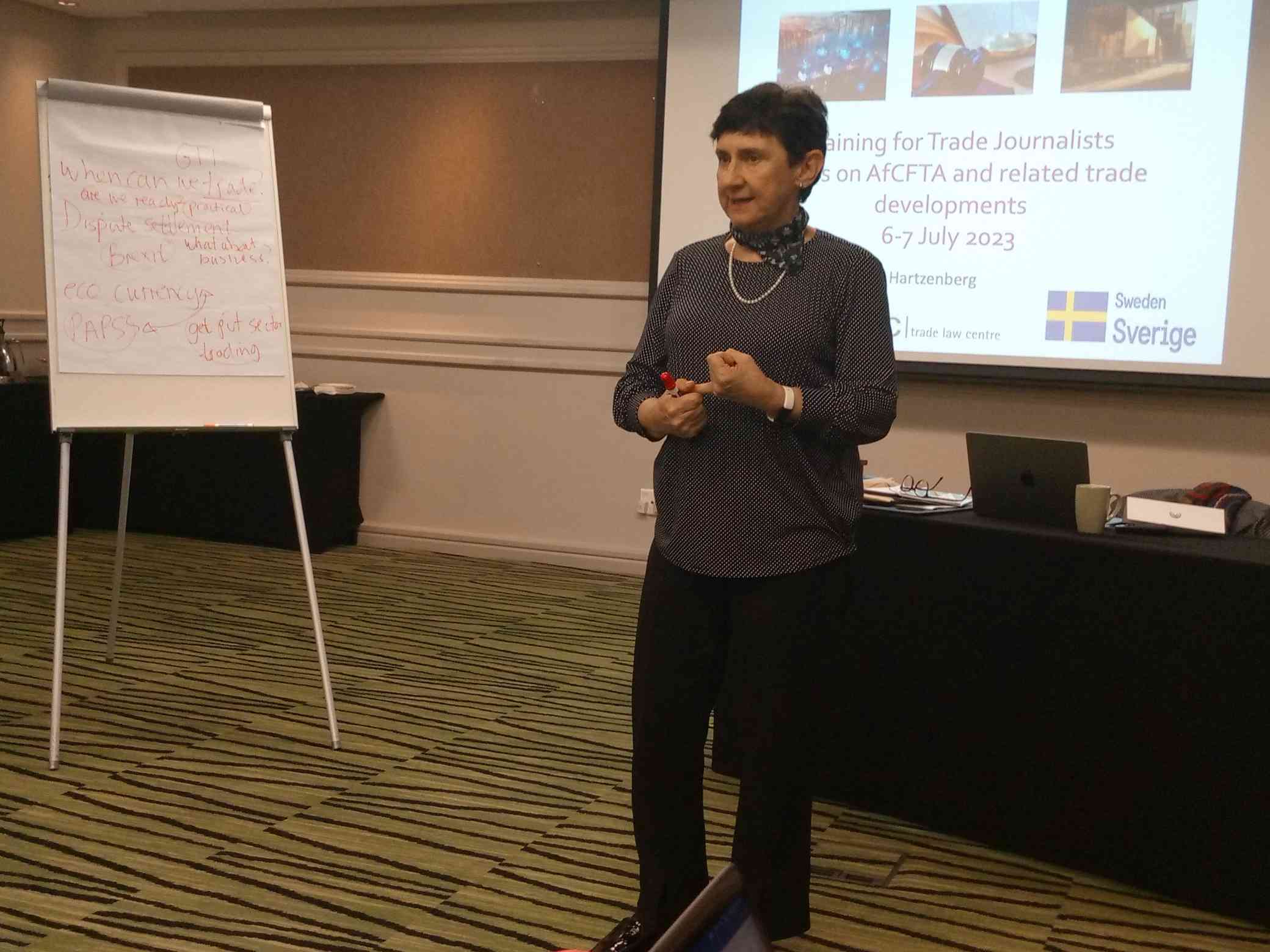|
Getting your Trinity Audio player ready…
|
The African Continental Free Trade Area (AfCFTA) has been described as the continent’s most ambitious integration initiative and a necessary ingredient for sustainable development.
Trudi Hartzenberg, the Executive Director of Trade Law Centre (TRALAC) in her address yesterday to journalists attending a 2-day training on the AfCFTA in Cape Town running from 6-7 July, said the initiative has a number of key objectives
“The main objectives of the AfCFTA are to create a single continental market for goods and services, with free movement of business persons and investments. It also seeks to expand intra-Africa trade across the regional economic communities and the continent in general; while enhancing competitiveness and supporting economic transformation with a view to promoting industrial development,” Hartzenberg said.
AfCFTA also rides on Agenda 2063 which is Africa’s framework for structural transformation. It builds on and aims to facilitate the implementation of existing continental initiatives.
There are many initiatives working together to determine the success of Africa. These include Accelerating Industrial Development in Africa (AIDA), Programme for Infrastructure Development for Africa (PIDA), Boosting Intra Africa Trade (BIAT), Comprehensive Africa Agriculture Development Programme (CAADP), Protocol on Free Movement of People (not part of AfCFTA) etc under Agenda 2063.
The AU has adopted legal instruments for the effective implementation of these flagship projects. Importantly, the UN Agenda 2030’s 17 SDGs are incorporated in the 20 goals of Agenda 2063. By implementing Agenda 2063, Africa will also meet its global commitments under the SDGs.
The AfCFTA Agreement is a comprehensive legal compact that includes the Agreement establishing the AfCFTA, Protocols on Trade in Goods, Trade in Services, Dispute Settlement, Investment, Intellectual Property Rights, and Competition Policy. Recently Digital Trade and Women and Youth have been added to the negotiating agenda.
For 2021 intra-African exports were valued at US$71 billion; 14% of Africa’s world exports. Between 2020 and 2021 intra-Africa exports increased by 7% and Africa’s world exports increased by 32%.
South Africa is the main intra-Africa exporter and importer; (accounting for 37% of intra-Africa exports and 14% of intra-Africa imports). South Africa’s intra-Africa exports and imports have recovered after declining by 18% and 28%, respectively in the 2019-2020 period. Both intra-Africa exports and imports increased by 32% and 25% respectively.
Other main intra-African exporters include Nigeria, Egypt, Zimbabwe, Morocco, Kenya, Tanzania, and Zambia, accounting for 71% of Intra-Africa exports; and 17% of intra-Africa exports are mineral fuels, followed by exports of machinery (5%), precious stones (5%), ores (4%) and copper (4%).
Most intra-Africa imports are dominated by SADC member states, with the exception of Ivory Coast, Morocco, and Kenya which also feature in the top 10 intra-Africa importers. The biggest portion of Africa’s world exports of cereals, soap, milling products, explosives, and photographic equipment are intra-Africa exports.
High transport costs, delays, port inefficiencies, and cumbersome border procedures can have a more negative impact on the trade of goods than any tariffs. Annex 4 of the AfCFTA Protocol on Trade in Goods sets out rules that seek to address specific procedural hurdles in order to facilitate trade procedures. This Annex presents a significant opportunity for State Parties to reap the economic benefits of improving the speed and efficiency of border procedures.
